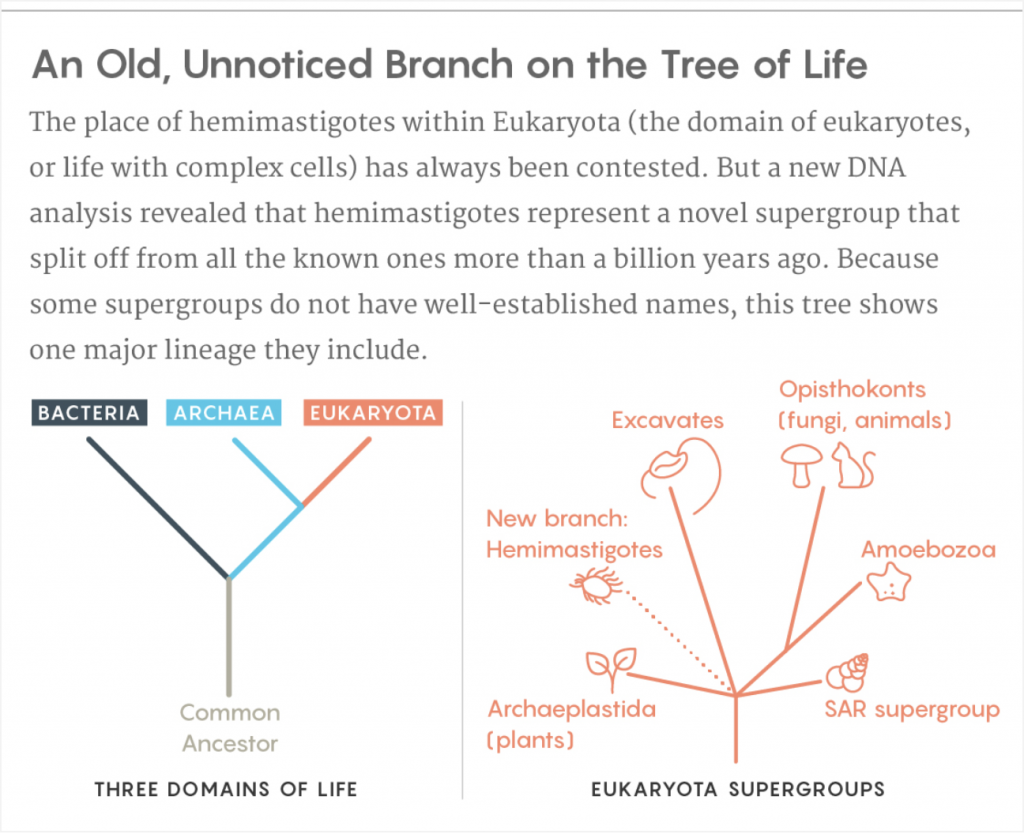Yesterday we looked at a graphic about an old family tree, revealed by ancient DNA. But at the end of the day it is a family tree of descent for a human male. But mankind itself fits within a kind of family tree, the circle family tree of life.
The tree of life continues to evolve as we discover new species and then reconfigure what we have to fit what we now know. When I was a wee lad in school, we learned about the three kingdoms of life: plants, animals, and fungi. Bacteria were a separate branch.
A few weeks ago, however, I was reading an article about how a recent DNA analysis identified a new “supergroup” within our larger group of complex cellular life, eukaryotes (plants, animal, and fungi fall within this). Luckily for our purposes the article contains a small graphic at which we can take a look.

The diagram uses a fairly simple design. Two panels split the largest groupings into its branches whilst the second panel breaks up eukaryotes. Colour links the eukaryotes together and shows how they fit into the broader tree to the left, which uses dark grey and light blue for bacteria and archaea, respectively.
A nice additional touch was the designer’s decision to include a small icon that represents the name of the supergroups within eukaryotes. Because, as the text points out, we don’t have commonly known names for these supergroups. Did I know that we belong to the opisthokonts? Absolutely not. Although dog people may be upset that the cat got the call to represent animals.
Regardless of the design, you can still see in the second panel how people are more closely related to amoeba than we are plants. But this new supergroup, hemimastigotes, branches off from the rest of us eukaryotes at a very early point. And the DNA proves it.
Overall this was a really nice graphic to see in a fascinating article. Science is cool.
Credit for the piece goes to Lucy Reading-Ikkanda.
